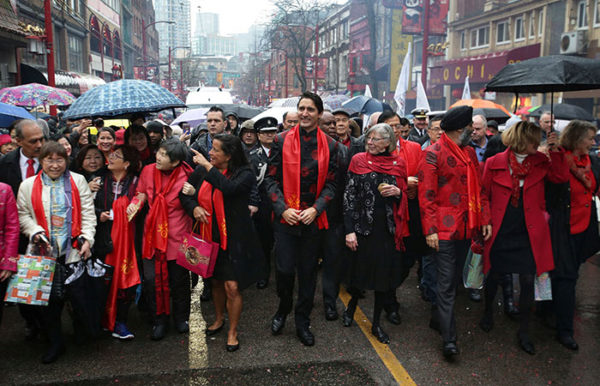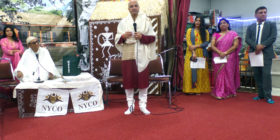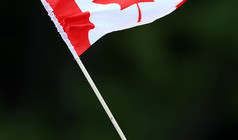What separates the US from Canada? Both the north American neighbours have been dream destinations for immigrants for a variety of reasons. While people choose the US for ‘larger than life’ perception of every aspect of livelihood, Canada presents a serene and calm option for people who wish to settle there. As the world faces one of the biggest refugee crisis in human history, and the emergence of ultra-nationalist regimes in Europe and now a seemingly one in the US under President Donald Trump, Canada continues to embrace people from across the world, with their cultures, lifestyles, and faiths.
While hate mongering and xenophobic tendencies are spreading like an epidemic, Canada has proved to be a safe haven for people from different parts of the world. The country has been able to remain neutral to all its citizens and give them equal rights. Be it Hindus and Sikhs from India, Muslims From Pakistan and the Middle East, Ultra-orthodox Jews from Europe and any other community from far off places, everyone feels equal and enjoys rights in the country without being threatened my the ‘majority community’. In fact, Canada has arguably the most multicultural cabinet of ministers in the world.
With US President Donald Trump at the helm of the affairs and banning the immigrants coming to the US, people find a ray of hope in Canada.
Canadian Prime Minister, Justin Trudeau, has said he will provide temporary accommodation to those stranded by Trump’s sudden change of plans regarding immigration. Many people were half way to America when he put his pen on paper.
In 2016, almost at the peak of the global refugee crisis, Canada welcomed 300,000 immigrants and has the same quota for 2017, although the number of refugees it will take in will decrease to 40,000 from 55,800.
So how did Canada establish itself as an open country with open borders for everyone?
1. Embracing Multiculturalism
In 1971, Canada under the leadership of Pierre Trudeau became the first country in the world to officially adopt multiculturalism as a policy and by doing so reaffirmed to its people that it values the life and dignity of all people regardless of gender, race or religion. But to say that multiculturalism spreads only through policy would be to say that one can become enlightened like the Buddha by sitting under a tree. Unlike Europe, which does have a conspicuous culture and history, this North America country is aware that culture is a fluid concept and cannot be forced on people. By maintaining values and laws, Canada has been able to integrate many different languages, food, and cultures into its periphery of multiculturalism.
2. Social inclusion
Canada’s social inclusive policies have won many hearts, particularly of those people who have seen nothing but violence in their native places. People who are persecuted for being religious minority experience equality in social structure security due to enforcement of laws safeguarding them. Moreover, being a multicultural society, Canada provides space for people to continue with their traditions and make themselves an integral part of the nation.
3. Not aiming for homogeneity
Core belief in the value systems has given people room to amalgamate their ethnicity while also being Canadian and believing in equality and justice for all. When new people come to Canada and become Canadians, what they’re really asked is to simply abide by the laws of the land, respect its institutions and contribute to the betterment of society as a whole. Canadians have often expressed their love for multiculturalism in polls and ranked it even higher than hockey. We know how much Canadians love hockey!
4. Laws don’t ban religious expression
France was the first country to ban the burqa, because according French constitution, wearing religious symbols in public harms the secular nature of the state. Following the burqa ban in France, several European countries followed suit and banned the Muslim face-veil including Bulgaria and Switzerland. Canada, however, is a land where people are free to express their religion as they wish, whether that includes wearing the turban or face veil.
5. Leadership that embraces openness
Current Prime Minister Justin Trudeau’s father, Pierre Trudeau was the 15th Prime Minister of Canada from 1969-1979 and 1980-1984 and it was he, who on October 8, 1971 said Canada would adopt policies that embrace the diversity of its people and cultures. He introduced multiculturalism as an antithesis to nationalism and also a way to balance the country’s two main languages – English and French. He also said there is no “official Canadian culture” and no ethnic group should assume centre stage.
Since it first adopted multiculturalism, Canada has continued to embrace it tightly. Last year on June 27 2016, the country celebrated Canadian Multiculturalism Day and PM Trudeau issued the following statement: “As Canadians, we appreciate the immense freedom we have to show pride in our individual identities and ancestries. No matter our religion, where we were born, what colour our skin, or what language we speak, we are equal members of this country.
“Our roots reach out to every corner of the globe. We are from far and wide, and speak over 200 languages. Our national fabric is vibrant and varied, woven together by many cultures and heritages, and underlined by a core value of respect. Multiculturalism is our strength, as synonymous with Canada as the Maple Leaf.”
These are not mere words issued for the sake of politics, but PM Trudeau has expressed affinity to all cultures by participating in common life, from dancing the Punjabi bhangra on Indian Independence Day or standing shoulder to shoulder with the Chinese community on Chinese New Year’s.
Let’s hope that global leaders will be able to go beyond identity politics and embrace its citizens for who they are and create an all-inclusive world.






Leave a reply